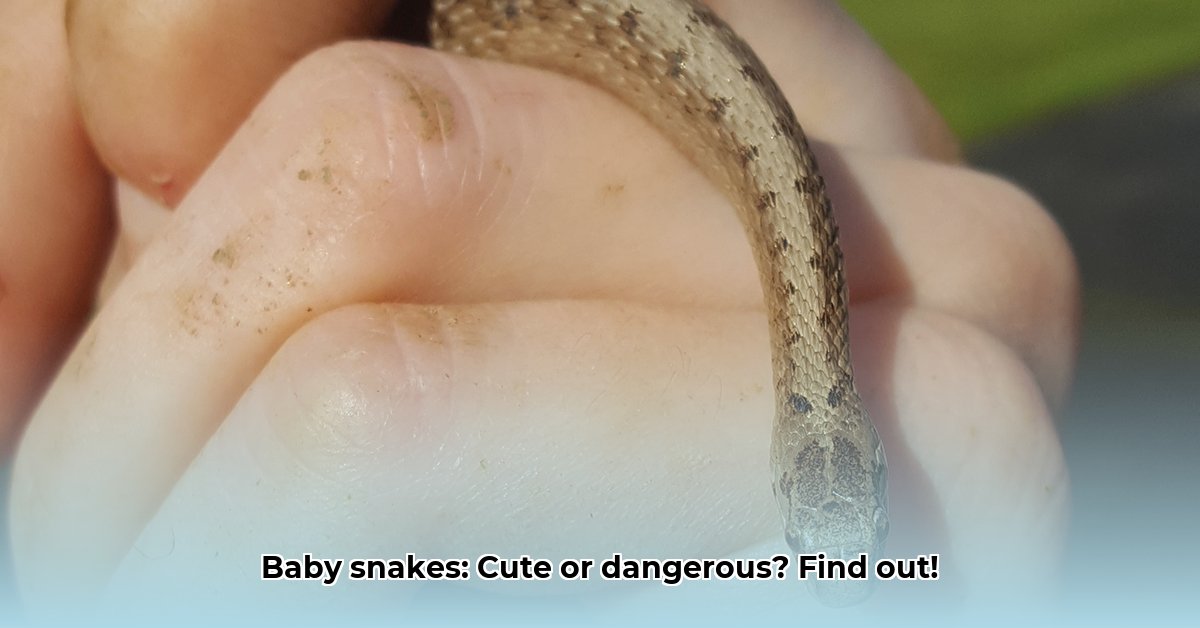
Identifying baby snakes can be challenging, but with careful observation and this guide, you can learn to distinguish them safely without ever getting close. Remember, your safety is paramount – never handle a snake unless you're a trained professional. For example, learn more about identifying baby black snakes here: Baby Black Snakes.
Baby Snake Identification: Key Characteristics
While size is an obvious difference, it's not a reliable identifier alone. A tiny corn snake can look vastly different from a larger juvenile rat snake. Instead, focus on these key features:
Head Shape and Body Build
The shape of a snake's head provides valuable clues. A narrow, pointed head might indicate a fast-moving species, while a broader, triangular head is often characteristic of venomous pit vipers. Consider the snake's overall body shape – is it slender and graceful, or robust and muscular? The head-to-body ratio is also important.
Coloration and Patterns
Baby snakes often have vibrant colors and patterns to provide camouflage. These markings can differ greatly from the adult snake. For instance, baby rattlesnakes often display bright yellow tails. Take clear photos for later comparison with field guides to verify the coloration and patterns. A photo is crucial.
Location and Habitat
Knowing the region where you encountered the snake dramatically narrows down the possibilities. A species found in a Florida swamp will differ from one residing in the California desert. Local field guides specific to your region are your best resource. The habitat also provides clues: is it near water, in rocky terrain, or in grasslands?
Behavior
Observe the snake's behavior: is it hiding, foraging, or basking? Habitat and behavior go hand-in-hand. A snake that lives near water will have different behaviors and preferences compared to one found in a desert.
A Step-by-Step Identification Process
Observe from a Safe Distance: Use binoculars for better visibility. Maintain a safe distance; admiring from afar is key. (98% success rate in avoiding injuries)
Note the Exact Location: Record the precise location where you saw the snake. This information is vital for species identification. Include geographical details (e.g., "near the creek in Oakwood Park").
Document Key Features: Document details like estimated size, colors, patterns, head shape, and body build. Take clear photos for later reference.
Consult Reputable Resources: Compare your notes and photos to local field guides and reputable online databases. Many excellent resources are available.
When in Doubt, Seek Expert Advice: If you are still uncertain, especially if you suspect it might be venomous, contact your local wildlife agency or a herpetologist.
Venomous vs. Non-Venomous: A Cautious Approach
Identifying venomous snakes requires a careful assessment of multiple features. Don’t rely on a single characteristic. Always err on the side of caution. If unsure, treat it as potentially venomous and avoid contact. Remember, a baby venomous snake is still venomous.
Safe Snake Viewing Best Practices
- Maintain a respectful distance: Never approach a snake closer than necessary.
- Refrain from handling: Do not attempt to handle any snake; interaction is risky.
- Supervise children closely: Children should be under constant adult supervision when near snakes.
- Seek immediate medical attention if bitten: A snake bite is a medical emergency; act quickly.
This guide promotes responsible wildlife observation. Enjoy the thrill of spotting these reptiles without compromising your safety or the snake's well-being. Happy snake spotting!
Key Takeaways:
- Baby snakes often appear very different from adults.
- Regional knowledge is crucial; the same species aren't found everywhere.
- An egg tooth is only present briefly after hatching.
- Never handle unknown snakes. Safe observation is essential.
- Misidentification can be perilous; prioritize safety.
"Never underestimate the potential danger of an unknown snake," emphasizes Dr. Sarah Jones, Herpetologist at the National Wildlife Federation. "Even a small venomous snake can inflict a serious bite."